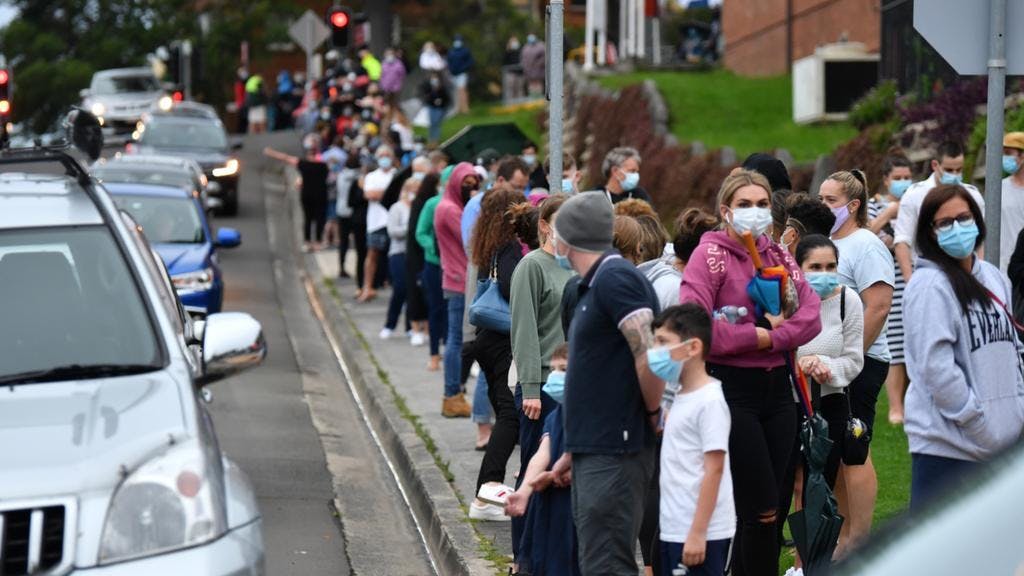NSW’s COVID-19 response is a disaster

The Berejiklian government’s response to the Sydney COVID-19 outbreak has been a total disaster, with cases emerging across the city after weeks of inaction. Avoiding a lockdown and refusing to mandate mask wearing is criminal—and working-class people could pay with their lives for the Liberal Party’s callousness.
When the number of new reported cases rose to eighteen on Wednesday, Chief Health Officer Kerry Chant was forced to admit that “this isn’t just a northern beaches local government area [LGA] problem”. As of 29 December, 43 cases had been detected across Sydney, including in Wollongong. More than 25 suburbs so far are reported to be sites of infection.
And yet only the northern beaches has anything resembling a lockdown—an extremely inadequate one. Workers still travel outside the area if their workplace is in another suburb. Bizarrely, the LGA was cleaved into northern and southern zones, with restrictions eased in Manly for Christmas even as case numbers there rose.
Now a new cluster has emerged in the inner-western suburb of Croydon, with six confirmed cases and more expected among 34 close contacts. The cluster began at a family gathering, indicating that Christmas may have been what UNSW public health expert professor Raina MacIntyre termed a potential “super-spreading disaster”. In a Sydney Morning Herald article on 20 December, MacIntyre said that we may not know the full picture of Christmas transmission for many days. In the meantime, the “the mother” of opportunities for rapid virus spread would have occurred: New Year’s Eve.
Today’s increased restrictions on home gatherings in Sydney, from ten to five indoor visitors, still leaves room for exponential transmission. And pubs, clubs and restaurants will be open with barely any restrictions. Patrons are officially limited to one every four square metres, a meaningless distance considering that epidemiologists now agree that the virus can linger indoors for hours. “We don’t want New Year’s Eve to be the cause of a super-spreader” event, the premier said today. And yet the government refuses to put in place the restrictions that could avoid this outcome and protect working-class people across the city.
We are beginning to see chinks in the contact-tracing armour. “Mystery cases” keep emerging. The chain of transmission leading to the new Croydon cluster is unknown, as is the case for two other confirmed cases today in Wollongong and in northern Sydney. The government has no idea who was “patient zero” for the Avalon cluster. So authorities do not know when they began to pose a risk of infection, or how many people they may have been in contact with.
This is the result of what Morrison terms the NSW “gold standard” approach to the virus: an ideological commitment to capitalist normality while the deadly pandemic is in our midst. An intransigence that puts business profits above human lives.
Testing, even at much higher rates than in the past few days, provides no guarantee that all chains of transmission are caught. And right now, contact tracers cannot establish the links between cases quickly enough to prevent further spread. Asymptomatic infections are potentially much more widespread than anyone knows; however, they are barely acknowledged by the government. No-one should be surprised if contact tracers are soon overwhelmed; they have been in almost every country that has tried the “test-and-trace” approach, hoping to avoid an economic shutdown.
According to premier Berejiklian, “outbreaks are inevitable”. In the UK, the same attitude has led to a record 53,135 new COVID-19 cases reported in one day. It’s not “herd immunity” that’s achieved in these conditions, but a laboratory with hundreds of thousands of experimental subjects in which the virus can replicate itself and mutate. That’s what led to the new, highly infectious strain that has spread out of London.
In Los Angeles, patients are being turned away from hospitals that are overflowing. And more evidence is emerging of the long-term and debilitating effects of COVID-19 for at least 40 percent of cases in Australia. International reports show that long-term symptoms have included chronic fatigue, neurological disorders and even psychotic behaviour.
For the NSW government, none of this matters—because profits come first. And of course, the third cricket test at the SCG must go on! New Year’s Eve fireworks are also continuing, but we are merely advised to not gather to watch them—because it’s our own personal responsibility to avoid catching the virus. Tell that to all the hospitality and transport staff who have to keep working while their customers don’t even have to wear a mask. The government has no other strategy to bring down case numbers while keeping the economy open. We are being left to fend for ourselves.
Mask mandates and lockdowns are far and away the most effective tools for containing and even eliminating the virus. They should have already happened across Sydney before Christmas. Instead, we could be facing a summer and beyond of spiralling case numbers, lives lost and the long-term health complications for those infected. At best, we’ll chug along for a while with the virus in our midst, clusters and half measures the norm when we could have dealt with this outbreak quickly right at the start.
The bulk of current cases are among more wealthy people. But if and when casualised, underpaid workers are infected, like in the Victorian second wave, half measures are useless because many people just have to go to work—bosses will not shut anything down of their own accord if it will cost them money and most workers can’t afford to take time off without government support. So if the virus starts to get into more working-class areas, the chains of transmission can rapidly get out of control.
The virus was eliminated in Victoria by a hard lockdown and mask mandate, which working people strove to make a success. We need this in Sydney now, before it’s too late.